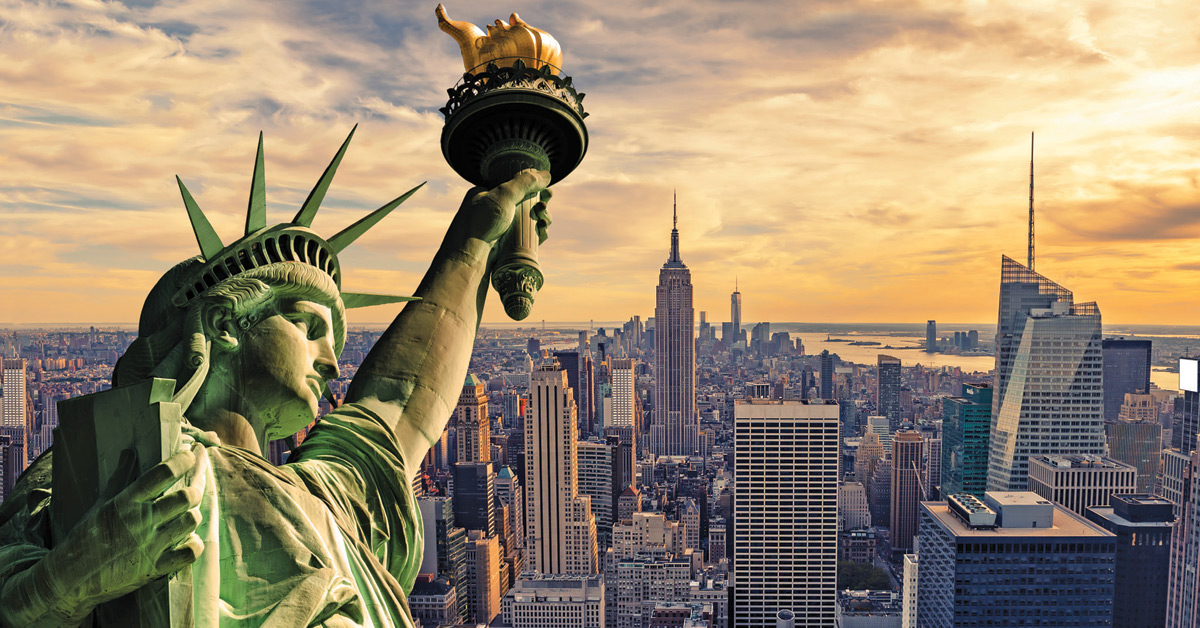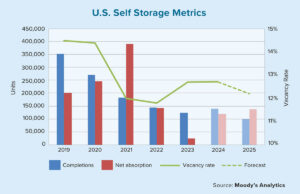The Mid-Atlantic Region, comprised of New York, New Jersey and Pennsylvania, was the early epicenter of the COVID-19 pandemic in the U.S. As of August 2020, the region had largely reopened, but the economic damage was evident.
New York, New Jersey and Pennsylvania had the second-, fourth- and fifth-highest unemployment rates in the country, respectively, as of this past July. In first-quarter 2020, New York’s gross domestic product (GDP) contracted by 8.2% from the prior quarter. Meanwhile, the economies of New Jersey and Pennsylvania contracted by 5.5% and 5.6%, respectively.
 Before the pandemic began to spread this past March, the Mid-Atlantic Region was underperforming the nation’s economy in terms of GDP growth. In 2019, only Pennsylvania matched the nation’s annual GDP growth rate of 2.3%, whereas New Jersey and New York saw growth of 1.5% and 1.8%, respectively. Economically, however, this region remains a powerhouse.
Before the pandemic began to spread this past March, the Mid-Atlantic Region was underperforming the nation’s economy in terms of GDP growth. In 2019, only Pennsylvania matched the nation’s annual GDP growth rate of 2.3%, whereas New Jersey and New York saw growth of 1.5% and 1.8%, respectively. Economically, however, this region remains a powerhouse.
New York’s GDP ranked third in the nation last year at $1.73 trillion. The economies of Pennsylvania and New Jersey were the sixth- and eighth-largest economies, respectively, among U.S. states. Workers in this region also tend to earn higher-than-average wages, with New York and New Jersey ranking third and fourth, respectively, in per capita income.
The Mid-Atlantic states are notable for their large and historic cities. New York City is the largest city in the U.S. with a population of 8.3 million. Its metro area spills into New Jersey and Pennsylvania to include nearly 20 million residents. Although New York City dominates the entire downstate economy, rural upstate New York is home to such notable cities as Buffalo, Rochester and the state capital of Albany.
Pennsylvania has two distinct regions. The eastern half is dominated by Philadelphia, which is the second-largest city in the Mid-Atlantic Region with a metro-area population of 6.1 million. The western half of the state is more closely associated with the Midwest and is dominated by Pittsburgh. Meanwhile, New Jersey’s largest city of Newark forms part of the New York City metro area. Other notable cities in the Garden State include Jersey City, Paterson and Elizabeth.
New York City is the nation’s financial capital. It is home to Wall Street and 73 Fortune 500 companies, including major banks JPMorgan Chase and Citigroup, communications conglomerate Verizon Communications, insurance company MetLife and pharmaceutical company Pfizer.
New Jersey also has a vibrant financial-services sector. Notable companies based in New Jersey include Johnson & Johnson, Prudential Financial and Merck. Twenty Fortune 500 companies are based in Pennsylvania, including AmerisourceBergen, Comcast, Rite Aid, PNC Financial Services and Kraft Heinz. Pennsylvania also remains a major producer of steel, coal, oil and natural gas. ●
Manhattan Office Market
The severe downturn and job losses in New York City in the wake of the COVID-19 pandemic hammered the Manhattan office market. Leasing activity hit a 25-year low in second-quarter 2020, according to Cushman & Wakefield. Citywide, companies leased 2.5 million square feet that quarter, which was down from a quarterly average of 8.4 million square feet over the prior three years. The vacancy rate also rose 60 basis points from the first quarter to 11.9%, which was the highest level since 2004.
 Overall asking rents fell 25 cents from the first quarter to $73.32 per square foot, which Cushman & Wakefield described as a “modest” decrease given the magnitude of distress caused by the virus. The company reported that numbers in the second half of this year could be worse while noting that New York City lost nearly 860,000 jobs between March and May of this year. Among these jobs, 17.3% were office-using positions and 5.8% were tied to the financial sector.
Overall asking rents fell 25 cents from the first quarter to $73.32 per square foot, which Cushman & Wakefield described as a “modest” decrease given the magnitude of distress caused by the virus. The company reported that numbers in the second half of this year could be worse while noting that New York City lost nearly 860,000 jobs between March and May of this year. Among these jobs, 17.3% were office-using positions and 5.8% were tied to the financial sector.
Focus: Gaming
The Mid-Atlantic Region is awash in casino gaming. In recent years, full-service Las Vegas-style casinos have opened in New York and Pennsylvania, adding to several large preexisting tribal casinos. Today, New York and Pennsylvania each have more than 30 casinos. In Pennsylvania alone, gaming supports 33,000 jobs statewide and has an economic impact of $6.3 billion, according to the American Gaming Association.
Prior to the COVID-19 outbreak, Atlantic City, New Jersey was on the upswing after several bleak years following the Great Recession. Two additional casinos opened in Atlantic City in 2018 — Hard Rock Atlantic City and Ocean Casino Resort. Overall profits for Atlantic City’s nine casinos also were up last year.
What the locals say
“Multifamily [assets in New York City] are not moving. Hotels are coming on the market a lot. Some of my clients are trying to adjust to the new situation, and they are trying to buy hotels and convert them into free-market apartment rentals. Hotels are being sold and repositioned, and we have never seen that before. Two- and three-star hotels are a really good product for multifamily, to be converted into large apartments and so on. Walking in the city right now, I would consider it a ghost town. The foot traffic you had prior to COVID and the foot traffic you have now is a big difference. New York hotels survive on tourism and business travel. Nobody is going to come and nobody is going to come for a while.”

Evi Kokalari-Angelakis
Founder, Golden Key Realty Group
3 Cities to Watch
Brooklyn

One of the five boroughs of New York City, Brooklyn would be the fourth-largest city in the U.S. (if it were its own city) with a population of about 2.6 million. The borough has a density second only to Manhattan among U.S. counties. Notable for its ethnic diversity and many distinct neighborhoods, the average purchase price of an apartment in Brooklyn is more than $630,000 and the average rent for a one-bedroom apartment is $3,455 per month.
Pittsburgh

Pennsylvania’s second-largest city was once known as a steel town but is now a symbol of the Rust Belt decline in U.S. heavy industry. In recent years, the city has seen a resurgence as a tech hub, drawing on engineering talent produced by Carnegie Mellon University and the University of Pittsburgh. Pittsburgh also regularly lands at or near the top of lists of best places to live in the U.S. due to its relatively low cost of living, economic opportunity and infrastructure.
Paterson

This New Jersey city was founded in 1792 by Alexander Hamilton and the Society for Establishing Useful Manufactures, the first planned industrial center in the U.S. Its factories were powered by the Great Falls of the Passaic River. Paterson was known as the “Silk City” for its silk production during the 19th century. Much of the industry there is now gone, however, and many of Paterson’s inhabitants commute to New York City.
Sources: American Gaming Association; Cushman & Wakefield; Encyclopedia.com; Forbes; KDKA-TV; NorthJersey.com; Patch.com; Reuters; ROI-NJ.com; The Motley Fool; Trading Economics; U.S. Bureau of Economic Analysis; U.S. Bureau of Labor Statistics; U.S. Census Bureau; U.S. Department of Labor; WorldAtlas.com; WorldCasinoDirectory.com; World Population Review
Author
-

Victor Whitman is a contributing writer for Scotsman Guide and a former editor of the publication’s commercial magazine.
View all posts







